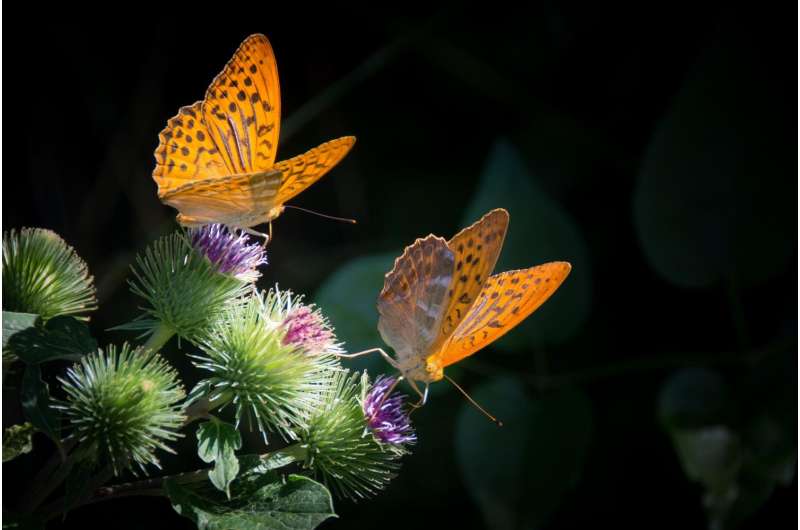A more precise numerical model of butterfly flight dynamics

Butterfly flight is a complex phenomenon in which the flow of air generated by the flapping of wings and the movement of the butterflies themselves are intricately intertwined. Many elements of butterfly aerodynamics have yet to be understood, even in terms of basic movement.
A team led by professor Kosuke Suzuki of the Department of Engineering, Shinshu University measured the actual movement of butterflies with high-speed video and put it in a motion capture program identifying characteristic points on their wings and bodies.
A numerical butterfly model based on this data was conceived as accurately as possible. Coincidentally, the model reproduced what was suggested through simulations using a simple model that the lab had formulated previously. The butterfly model, which is more precise than the previous studies, confirmed what had been suggested in the past.
Now that the group has elucidated the lion's share of how the butterflies generate force, the group would like to elucidate the mechanism by which the torque is controlled by the butterfly without losing its attitude. Ultimately, this mechanism can be applied to the design of micro air vehicles (MAVs).
"Revisiting the flight dynamics of take-off of a butterfly: experiments and CFD simulations for a cabbage white butterfly" was published in the journal Biology Open.
More information: Kosuke Suzuki et al, Revisiting the flight dynamics of take-off of a butterfly: experiments and CFD simulations for a cabbage white butterfly, Biology Open (2022).
Provided by Shinshu University





















